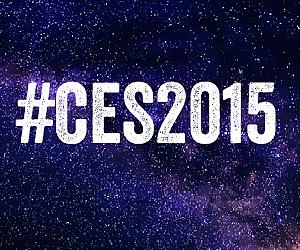Forecasting the latest health tech trends at CES 2015

Christmas comes a few weeks late for the tech-obsessed when the world’s largest trade show, the Consumer Electronics Show (CES), takes over Las Vegas each January.
Health-oriented products take the main stage today, having surged in popularity at last year’s show. With exhibits related to digital health taking up over 40 percent of the event space in 2014, the Digital Health Summit at the CES took over its own event arena this year. As the recent onslaught of digital health trends shows no signs of slowing down, this year’s primary aim was to expose the most recent advancements in the rapidly evolving industry of digital health technologies.
Within the specific category of digital health, many trends focused on wearable health and fitness devices. Some of the best new products unveiled at the Digital Health Summit portion of the CES included:
- The JINS Meme glasses eye-tracking software. This technology not only keeps track of such things as calories burned and posture, but can determine when fatigue is setting in. That can be a safety issue when it comes to some drivers, especially long haul truckers.
- The first “smart belt”, known as Belty, is capable of adjusting itself depending on how much you’ve eaten and exercised throughout the day. Embedded fitness sensors send data back to the corresponding app, allowing the wearer to take immediate action and easily observe weight-loss progress.
- A smart bracelet, Netatmo June, is a UV detector that senses when a person is getting too much sun. The device hopes to help wearers limit their chances of contracting skin cancer.
- Quell is a wearable product that aims to help relieve nerve-related and other chronic pain (stemming from health conditions such as diabetes) through neurostimulation technology. After it’s attached to a person’s upper calf, technology helps the pain fade within a 15-minute span by stimulating the sensory nerves in the musculature.
- The ADAMM (Automated Device for Asthma Monitoring and Management) device from Health Care Originals currently helps detect coughs, monitor heart rate and respiration as well as listen for wheezing through a wearable patch. Within the next few months, it will be able to alert an individual of an impending asthma attack, monitor inhaler use, and send the alerts to necessary medical personnel.
- Tensio is the first in a suite of apps from Humetrix aimed to help patients manage their high blood pressure. Using the Apple Healthkit to track medication data as well as lifestyle habits, diet and exercise, the individual is able to share the information with their doctor in order to optimize treatment.
Some additional trends to watch for in the coming years include the continued inroads made by both nanotechnology and 3D printing. In the latter case, the eventual goal is to start producing artificial organs. Additionally, new innovations in telemedicine will allow for greater doctor-patient interaction, while virtual reality devices will also be deployed to help patients understand exactly what is taking place in their bodies.
As always, CES' Digital Health Summit served as a peek at what’s to come over the next few months, years, or even decades.

